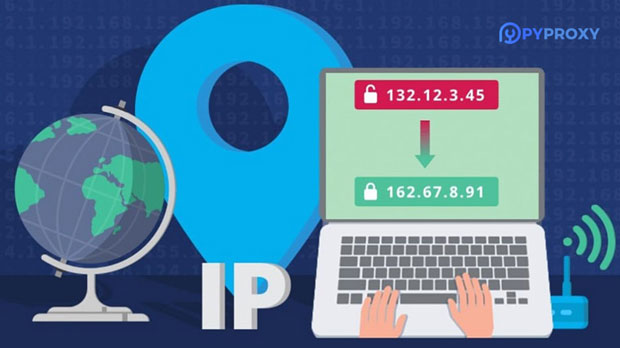When configuring a socks5 proxy on Chrome, users have the option of using either a SOCKS5 proxy extension or adjusting the browser's built-in settings. While both methods enable users to route their internet traffic through a proxy, they function in distinct ways. A SOCKS5 proxy extension offers convenience and ease of use, but it is limited to the browser's activity, leaving other system applications unaffected. On the other hand, configuring the proxy settings directly in the browser can provide a more comprehensive solution, routing all traffic through the proxy. However, this requires a more detailed setup process and may affect the system’s overall network configuration. Understanding these differences is crucial for users looking to optimize their browsing experience based on security, privacy, and convenience needs. What is a SOCKS5 Proxy?Before diving into the comparison between the extension and browser settings, it's important to understand what a SOCKS5 proxy is and how it works. SOCKS5 is a protocol that allows users to route their internet traffic through an intermediary server, which can help mask their IP address and provide anonymity while browsing. Unlike HTTP or HTTPS proxies, which only handle web traffic, socks5 proxies are more versatile, capable of routing any kind of internet traffic—whether it’s web browsing, emails, or even P2P connections.Using SOCKS5 Proxy with Chrome ExtensionsConvenience and SetupOne of the major advantages of using a SOCKS5 proxy extension in Chrome is its ease of installation. Most extensions can be installed directly from the Chrome Web Store, and users can start configuring the proxy with just a few clicks. This method is particularly useful for users who do not want to deal with the complexities of configuring system-wide settings and prefer a quick solution for browsing.The setup process is typically as simple as adding the extension to the browser, entering the SOCKS5 server’s address, and specifying the port. Once installed, the extension will route all traffic originating from the browser through the proxy, ensuring that the user's browsing activity remains anonymous.Scope of Proxy CoverageHowever, one limitation of using a SOCKS5 proxy extension is its scope. The proxy only affects traffic from the Chrome browser, meaning that other applications or programs running on the computer will not be routed through the proxy. This can be an advantage if you only need to anonymize your browser activity, but it may not be suitable for users who wish to route all internet traffic through a proxy. In such cases, they would need to use a different solution that works at the system level.Performance ConsiderationsIn terms of performance, using a browser extension is generally less resource-intensive than adjusting system-wide settings. Since the proxy only affects browser traffic, it is less likely to slow down the overall internet connection compared to a full system-wide proxy setup. However, the performance of the proxy can still be influenced by factors such as the server location and the quality of the extension itself. A poorly optimized extension can lead to slower browsing speeds or connection issues.Using SOCKS5 Proxy Through Browser SettingsComprehensive Control and System-Wide ApplicationUnlike using an extension, configuring the SOCKS5 proxy through Chrome’s built-in settings provides a more comprehensive approach. By modifying the proxy settings in the browser itself, users can ensure that all traffic from Chrome is routed through the SOCKS5 server. However, this method can also be expanded to affect the entire operating system when combined with system-level proxy settings.This approach is particularly useful for users who want a more secure solution or need to anonymize all internet traffic, including that of other applications. It provides a higher level of control, as users can configure multiple proxy settings to suit different needs. For example, one can switch between different SOCKS5 servers depending on location or use a combination of different proxy types for enhanced security.Complexity of SetupThe downside to configuring a SOCKS5 proxy through the browser’s settings is the complexity involved. Unlike extensions that offer a straightforward setup process, configuring the proxy through Chrome’s settings requires users to delve into advanced networking options. This might involve accessing system-wide settings or manually configuring connection settings within the browser, which can be intimidating for less tech-savvy users.To configure the SOCKS5 proxy, users typically need to navigate through the Chrome settings menu, locate the "Network Settings" or "Proxy Settings," and manually input the proxy’s address and port number. While it offers more control, the process is more time-consuming and may require additional troubleshooting if something goes wrong.System-Wide Proxy ApplicationOne of the key advantages of configuring the proxy through browser settings, particularly for those who have the technical knowledge to modify system-wide settings, is that it can affect all internet traffic on the computer. This means that not only Chrome but also other applications (e.g., email clients, software updates, etc.) will route their traffic through the SOCKS5 proxy.This system-wide effect can be advantageous for users who need consistent anonymity across all activities, not just web browsing. By configuring the operating system’s network settings, the proxy can handle all outgoing connections, offering a more unified and secure solution.Performance ConsiderationsIn terms of performance, configuring the SOCKS5 proxy directly through the browser or system settings can introduce more latency compared to using an extension. Since all internet traffic (and not just browser activity) is routed through the proxy, the overall connection speed may be slower, especially if the proxy server is located far away from the user or if the server is experiencing high traffic.Moreover, configuring a proxy at the system level may require additional resources, as the computer must handle all outbound traffic through the proxy, which could impact the performance of other applications running on the system.Comparing Proxy Extensions and Browser SettingsEase of UseFor users seeking a simple, hassle-free solution, SOCKS5 proxy extensions for Chrome are ideal. They offer a quick installation process and straightforward configuration, making them suitable for casual users who need to route only browser traffic through a proxy.In contrast, modifying the browser’s settings or the system’s network settings is more complex and may require a higher level of technical expertise. While this method offers greater control and the ability to route all internet traffic through the proxy, it may not be suitable for those who are unfamiliar with advanced networking configurations.Traffic ScopeAnother key difference lies in the scope of the proxy's coverage. A SOCKS5 proxy extension only affects Chrome browser traffic, leaving other applications unaffected. This is a good solution for users who are primarily concerned with browsing anonymity but do not need to route other traffic (e.g., P2P applications, email clients) through the proxy.On the other hand, configuring the proxy through the browser settings or system settings can route all internet traffic through the proxy, providing more comprehensive protection. This approach is better suited for users who want to ensure their entire system is anonymous.Performance and System ImpactIn general, using a SOCKS5 extension places less strain on system resources compared to system-wide proxy configurations. This can result in faster browsing speeds, especially for users with limited bandwidth or lower-end systems. However, the performance will ultimately depend on the quality of the extension or the configuration of the proxy server.System-wide proxy configurations may result in slower internet speeds due to the additional routing involved, but they offer more robust anonymity and security across all applications.ConclusionIn conclusion, the choice between using a SOCKS5 proxy extension or configuring the proxy settings within Chrome largely depends on the user's needs and technical expertise. Extensions offer a convenient and user-friendly solution for routing browser traffic through a proxy, while browser settings and system configurations offer a more comprehensive, albeit more complex, method for routing all internet traffic through the proxy. Users should consider their specific privacy and security requirements, as well as their comfort level with advanced networking configurations, when deciding between these two methods.
Jan 02, 2025




















































